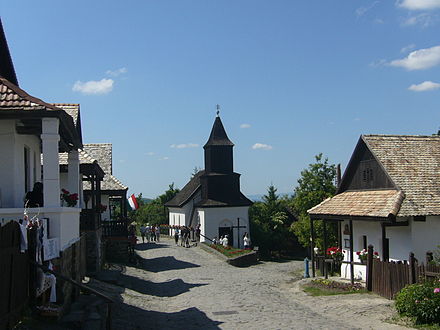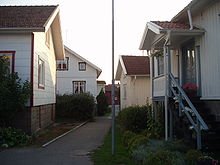Village Facts for Kids
A village is a small community that offers a slower pace of life and a rich sense of culture and tradition.
View Article For:

Related Articles
Introduction
Villages are usually bigger than hamlets but smaller than towns. They often have a population between a few hundred and a few thousand people. Villages can be found all over the world, from the green fields of England 🇬🇧 to the rice paddies of Japan 🇯🇵. Villagers often know each other well, which creates a strong sense of belonging and friendship. Villages may have farms, schools, and markets where people buy and sell goods. They can be peaceful places where nature surrounds daily life. 🌳
Types Of Villages
Some are farming villages, where people grow crops like wheat 🌾 and corn 🌽. Others are fishing villages, where folks catch fish and crab. Some villages are famous for crafts like pottery and weaving. 🧶
Tribal villages are home to indigenous people who keep their unique cultures alive. Many villages are near mountains, rivers, or seas, which helps their livelihoods. In some countries, there are tourist villages that invite visitors to experience local life. 💼
Each type of village has its own charm and special way of living!
History Of Villages
️ People began farming and raising animals, which meant they could stay in one place instead of moving around. One of the earliest known villages is Çatalhöyük in Turkey, which had around 5,000 people! 🏺
As time went by, villages grew and developed into towns. Different cultures built unique villages based on their surroundings and needs. 💡
Today, we still have villages all over the world, and they help us connect with nature and our traditions!
Architecture In Villages
In some places, you might see houses made of mud and straw, like in Africa and parts of Asia. 🏜
️ In other countries, villages have wooden houses with colorful designs. In Scandinavia 🌟, traditional villages may feature turf-roofed houses that help keep homes warm. Many villages also have community centers, schools, or churches that are important for gathering together. Architectural styles can vary widely, but they all reflect the village's way of life and the materials available in the area.
Villages Around The World
For example, the village of Hallstatt in Austria is famous for its breathtaking mountains and lakes. 🏔
️ In Africa, there are traditional villages like the Masai Mara in Kenya, where the Masai people live and practice herding. 🦓
Villages in India, such as Khonoma, celebrate unique customs like eco-friendly agriculture. In Japan, Shirakawa-go features historic thatched-roof houses. 🏡
Each village reflects its culture, environment, and history, showing how diverse human experiences can be. Visiting different villages can help us learn about our world's rich cultures!
Cultural Significance Of Villages
For example, in India, villages celebrate colorful festivals like Diwali, where people light lamps and share sweets. 🎆
In many African villages, traditional dances and music are essential parts of community life. People often gather to tell stories and pass down knowledge through generations. 🥁
Villages are also where local foods and crafts are created, which represent their unique cultures. The people in villages often band together to preserve and celebrate their traditions, making them vibrant and lively places of community and learning!
Challenges Faced By Villages Today
️ One issue is urbanization, where people move to cities for jobs, leading to fewer villagers and sometimes abandoned homes. Villages also struggle with access to modern services like healthcare and education. 🚑📚 Environmental problems, such as climate change, can impact farming and fishing—important sources of food and income. Additionally, villages must preserve their cultures while adapting to new technology and lifestyles. However, many communities are finding creative ways to overcome these challenges, showing that teamwork, traditions, and innovation can help them thrive! 🤝
Future Of Villages In A Modern World
With technology, villagers can connect with the world while staying true to their culture. For example, farmers use apps to sell their products online 🌐, and children can learn from schools around the world with the help of the internet. Villages can adapt to modern needs while protecting their traditions and the environment. 🌞
Green technologies, like solar energy, help villagers reduce their carbon footprint. By working together, the people of villages can lead sustainable lives, passing on their unique heritage to future generations! 🌱🌏
Economics And Livelihoods In Villages
Farming villages grow crops such as rice, corn, and vegetables for food. 🥕
Fishing villages rely on oceans and rivers to catch fish and shellfish. Craft villages produce handmade goods like pottery, jewelry, and textiles for markets. 🧵
Villagers work together and share resources, helping each other thrive. Local markets are where people can sell their products! 🛒
Over time, economic activities evolve; today, some villages also welcome tourists, bringing in new opportunities for income and growth. 🏖
️
Village Governance And Community Life
️ This local governance helps villagers solve problems and organize events. People come together in community meetings to discuss important issues, like building schools or organizing festivals. 🎊
One common type of leadership is through elders; they are respected members who share their wisdom. Villagers enjoy a strong sense of community, helping each other in good times and bad. This bond makes village life special, as shared experiences and traditions create lasting memories. Community festivals and gatherings help keep those connections strong! 🎉
Environmental Impact And Sustainability In Villages
In some places, sustainable methods like organic farming help protect the environment. Villagers often depend on local resources like trees, water, and soil for their way of life, which means they must care for these natural elements. 🌳
Some villages, like those in Bhutan, have implemented sustainable practices, focusing on preserving forests and wildlife. Eco-villages promote green energy and waste recycling, teaching us how to protect our planet! 🌏
By working together, village communities can maintain their beautiful surroundings, ensuring a healthy environment for future generations. 🌈
DIY is a humongous library of
activities and courses for kids.
Curious?
Gallery of
Did you know?
🏡 A village is a small community where people often know each other well.
🇬🇧 Villages can be found all over the world, from England to Japan.
🗓️ The first villages appeared about 10,000 years ago during the Neolithic Age.
🌏 There are many types of villages, including farming and fishing villages.
🎉 Villages often celebrate colorful festivals that reflect their cultural traditions.
🏠 The buildings in villages can tell us a lot about their history and culture.
🌿 Many villagers earn their living through farming, fishing, or crafting.
🗳️ Villages often have local leaders or councils to help make decisions.
🌎 Different villages around the world showcase unique customs and environments.
🌱 Villages often prioritize living in harmony with nature through sustainable practices.










